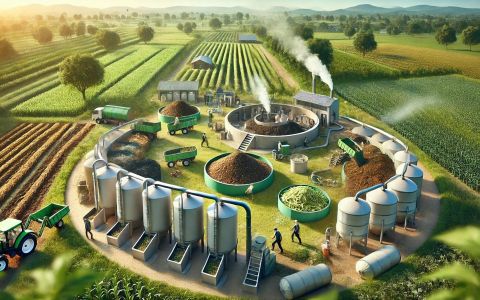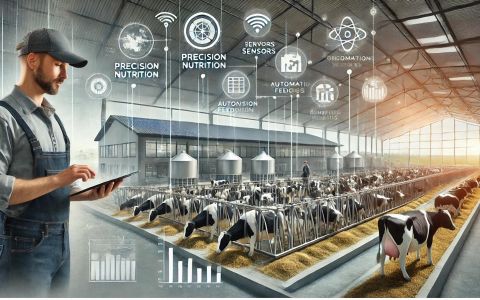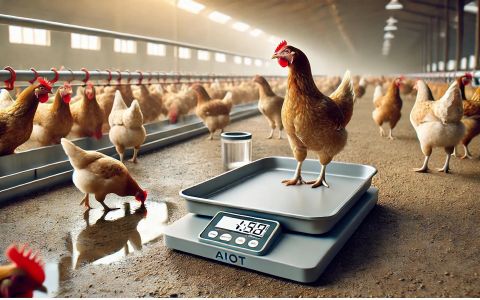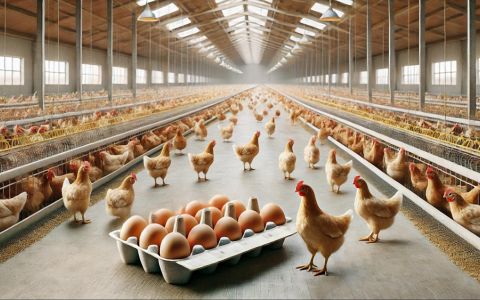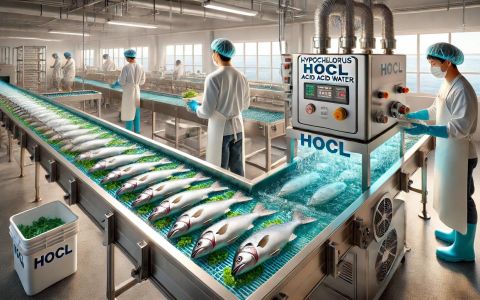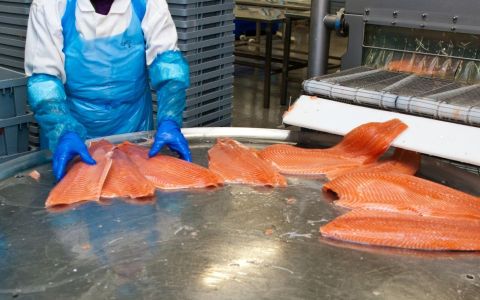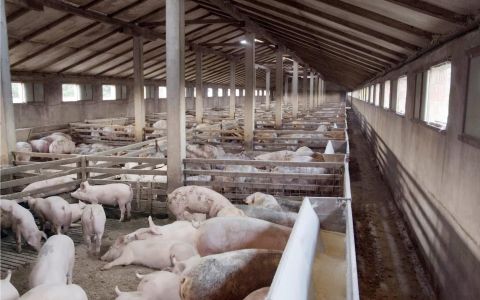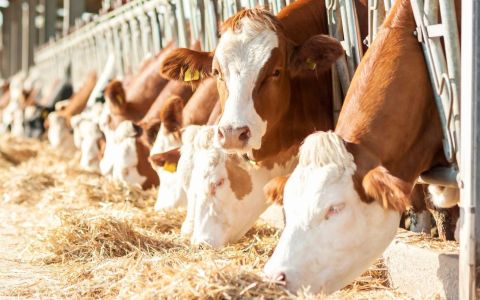Smart Solar-Aquaculture Symbiosis: Integrating Renewable Energy with Intelligent Fish Farming
As climate change accelerates, countries around the world are racing to develop renewable energy solutions. Among them, solar photovoltaics (PV) stand out for their affordability and adaptability. In Taiwan, a nation blessed with abundant sunlight, the solar industry is booming, fueled by the government’s aggressive push for energy transition. But with limited land and a dense population, how can Taiwan strike a balance between energy expansion and food security?
Solar-aquaculture symbiosis—a groundbreaking approach that transforms fish farms into dual-purpose powerhouses. By installing solar panels over fish ponds, this innovative model not only maximizes land use but also generates clean energy without disrupting aquaculture. The result? A win-win solution for both the energy and fishing industries.
But the real game-changer lies in smart aquaculture technology. With advancements in IoT, AI, and big data, fish farms can now be equipped with real-time water quality monitoring, automated feeding systems, and intelligent fish health management. These innovations boost productivity, enhance fish welfare, and reduce operational costs, making solar-aquaculture symbiosis even more efficient and sustainable.
Smart Solar-Aquaculture Symbiosis: A Sustainable Solution for Island Nations
Smart solar-aquaculture symbiosis is an integrated innovation model designed to address energy instability and low aquaculture efficiency in island nations. By combining renewable energy generation with smart aquaculture technology, this system ensures stable power supply while boosting hatchery success rates and production efficiency—paving the way for sustainable development in island economies.
Why Choose Smart Solar-Aquaculture Symbiosis?
- Stable Energy Supply – Harnessing solar power reduces reliance on traditional energy sources, making it ideal for resource-scarce island nations.
- Boosted Aquaculture Efficiency – AI-driven monitoring and advanced hatchery technologies enhance productivity, solving issues like seed shortages and low farming efficiency.
- A Win-Win Model – This "energy + aquaculture" solution drives economic growth, unlocking new opportunities for local industries.
Application Scope & Target Audience
- Island Nations & International Partners – Provides stable electricity and high-value smart aquaculture technologies, supporting infrastructure development and industry upgrades.
- Solar-Aquaculture Equipment Suppliers & Solution Providers – Unlocks new market opportunities, expanding into high-growth international sectors.
- Policy Makers & Collaborative Organizations – Drives solar-aquaculture adoption, promoting sustainable energy and fisheries development in island nations.
Defining Smart Aquaculture: Scope & Importance
Smart aquaculture is a technology-driven approach that enhances fisheries productivity, reduces costs, and improves environmental sustainability. As climate change intensifies and marine ecosystems shift, traditional fishing faces overfishing and declining yields, making smart aquaculture essential for the industry's future. It also addresses labor shortages and attracts younger generations to fisheries.
The scope of smart aquaculture covers:
- Environmental Monitoring – IoT sensors track water quality, temperature, and oxygen levels in real time, allowing data-driven responses to environmental changes.
- Automated Aquaculture – AI-powered systems automate feeding, water regulation, and fish sorting, cutting labor costs and boosting efficiency.
- Fish Health Management – Image recognition and AI detect early signs of disease, enabling prompt treatment and reducing losses.
- Fisheries Resource Management – Big data analytics optimize fishing strategies to ensure sustainable fish stock management.
- Supply Chain Traceability – Blockchain technology ensures product traceability, guaranteeing food safety and quality assurance.
- Sustainable Certification – Smart aquaculture helps fisheries meet global standards like BAP (Best Aquaculture Practices), enhancing market value and competitiveness
Defining Solar-Aquaculture Symbiosis: Characteristics & Impact
Solar-aquaculture symbiosis is an innovative model that integrates aquaculture with solar power generation, optimizing land use and creating a win-win solution for fisheries and renewable energy.
- Multi-Purpose Land Use – Enables simultaneous aquaculture and solar power production on the same land, maximizing efficiency.
- Green Energy Adoption – Reduces reliance on traditional energy sources, lowers carbon emissions, and aligns with sustainability goals.
- Enhanced Aquaculture Environment – Solar panels provide partial shading, helping to regulate water temperature, reduce evaporation, and stabilize water quality for better fish farming conditions.
- Increased Aquaculture Value – Integrating smart aquaculture technology boosts efficiency and product quality, improving profitability for fish farmers.
Types of Solar-Aquaculture Systems
- Outdoor Pond-Based Systems
• On-Pond Installation – Solar panels float on the pond’s surface.
• Pond-Side Installation – Panels are mounted on pond embankments or nearby land. - Indoor Rooftop Systems
• Solar panels are installed on the roofs of indoor aquaculture facilities, optimizing space usage.
Environmental & Social Impact Assessment
Taiwan has implemented the Solar PV Environmental & Social Assessment Mechanism to classify fish ponds based on ecological sensitivity:
• Pilot Zones & Priority Zones – Suitable for early-stage adoption.
• Mitigation & Avoidance Zones – Require additional environmental safeguards or may not be suitable.
Taiwan’s Solar Power Development
As of September 2023, Taiwan’s installed solar capacity reached 11.7 GW. However, rapid development brings challenges such as ecological concerns, landscape impact, and community acceptance.
Driving Sustainable Growth
Leading organizations, such as CPC (potentially the China Productivity Center), are actively promoting sustainable solar-aquaculture strategies, enhancing environmental, social, and corporate governance (ESG) transparency to drive long-term industry growth.
Application Cases of Smart Aquaculture Technology in Solar-Aquaculture Symbiosis
The application of smart aquaculture technology in solar-aquaculture symbiosis sites is becoming increasingly common. Examples include:
- Water Quality Monitoring System: Using sensors and IoT technology to monitor water quality parameters in real time. The data is transmitted to a cloud platform, allowing fish farmers to remotely monitor water conditions via mobile phones or computers and adjust farming strategies based on data analysis.
- Automated Feeding System: Automatically adjusts feeding amounts according to the growth stage and appetite of fish, preventing overfeeding that could lead to water pollution while also reducing feed costs.
- Fish Health Management System: Utilizes image recognition technology to monitor fish activity and physical characteristics, promptly detecting abnormalities and providing early warnings for potential diseases.
- Smart Solar-Aquaculture Greenhouses: Integrates smart aquaculture technology with greenhouse systems to create a more optimized farming environment, improving fishery production and quality.
- Star Aquaculture: Located in Tainan, the "Riyun Project" manages an area of 100 hectares and employs mixed farming of white shrimp, mullet, and milkfish. It has applied for six aquaculture-related patents, making it a successful example of the application of smart aquaculture technology in solar-aquaculture symbiosis sites.
Advantages & Challenges of Smart Solar-Aquaculture Symbiosis
| Advantage | Challenges |
| Improves Land Utilization Efficiency | High Initial Investment Costs |
| Reduces Production Costs | High Technical Barriers |
| Enhances Aquaculture Environment | Data Security & Privacy Concerns |
| Promotes Aquaculture Industry Upgrade | Challenges in Scaling Up |
| Stabilizes Farming Conditions | Stakeholder Coordination Issues |
| High Costs & Expertise Requirements | |
| Public Awareness & Acceptance |
Future Development Trends of Smart Aquaculture Technology in Solar-Aquaculture Symbiosis
- Application of Artificial Intelligence and Machine Learning: Utilizing AI and machine learning to analyze aquaculture production data, predict yields and diseases, and optimize farming strategies.
- Integration of IoT and Cloud Platforms: Connecting various devices and data within solar-aquaculture symbiosis sites to IoT and cloud platforms for remote monitoring and management.
- Cross-Industry Collaboration: Strengthening cooperation between the aquaculture, solar energy, and technology sectors to jointly promote the development of solar-aquaculture symbiosis and smart aquaculture.
- Digital Twin Technology: Implementing "digital twin" technology to digitize fish farmers' experience and knowledge, integrating AI to optimize farming strategies and address challenges related to knowledge transfer and labor shortages.
- Development of Indoor Aquaculture: Combining indoor aquaculture facilities with green energy to create a more controlled and efficient farming environment, while addressing associated challenges and opportunities.
- Challenges in Smart Aquaculture: Overcoming rising feed costs, scaling difficulties, and differences in operational mindset compared to smart agriculture to drive industry-wide adoption.
- International Cooperation: Strengthening global partnerships to share knowledge and best practices in smart aquaculture and collectively tackle global challenges.
Current Status of Smart Aquaculture Technology in Taiwan’s Fisheries-Solar Symbiosis
The Taiwanese government is promoting fisheries-solar symbiosis and smart aquaculture to enhance industry competitiveness. Key developments include:
- Demonstration Sites: Government and enterprises collaborate to establish fisheries-solar symbiosis sites, such as the Beimen project by Taiwan Salt Green Energy and the Institute for Information Industry.
- Smart Aquaculture Equipment: Domestic firms develop technologies like water quality monitoring, automated feeding, and fish health management.
- Industry-Academia Collaboration: Universities partner with enterprises, such as National Cheng Kung University and Delta Electronics’ smart aquaculture R&D center.
- Policy Support: Government subsidies encourage adoption, including the Ministry of Economic Affairs’ “Smart Fisheries-Solar Symbiosis Industry Solution Refinement Project.”
- Fisheries-Solar Symbiosis Zones: Areas in Changhua, Yunlin, Chiayi, Tainan, Kaohsiung, and Pingtung cover 14,480 hectares, targeting 4.4 GW capacity.
- Leopard Energy Project: A 170-hectare site in Beimen, Tainan, with a 123 MW capacity, serves as Google’s first green energy purchase site in Asia and supports smart aquaculture adoption.
- Fisheries Research Institute: Conducts trials, sets solar installation ratios, and harvest requirements for industry transformation.
- Interdepartmental Cooperation: The Council of Agriculture, Ministry of Economic Affairs, Ministry of the Interior, and Taiwan Power Company manage site selection, environmental assessments, and grid infrastructure.
International Cases of Smart Aquaculture in Fisheries-Solar Symbiosis
The application of smart aquaculture technology in fisheries-solar symbiosis is increasing worldwide. Notable examples include:
• Germany - Oceanloop: Uses an indoor recirculating aquaculture system combined with solar power to farm high-quality shrimp.
• USA - California Fisheries-Solar Symbiosis Site: Solar panels provide partial shading, reducing water temperature and increasing fish farming yields.
• Taiwan - Smart Aquaculture Technology: Developments include the smart aquaculture R&D center by National Cheng Kung University and Delta Electronics, and HanDing Biotech's ICT-integrated fish-algae symbiosis farm.
• Care Goods Farm (Taiwan, Kaohsiung): Implements smart aquaculture technologies such as water quality monitoring, water recycling, and automated feeding, earning the “Aquaculture Expert” recognition in 2021.
Policies and Regulations on Smart Aquaculture in Fisheries-Solar Symbiosis
To promote fisheries-solar symbiosis, the Taiwanese government has established various policies and regulations, including:
• Renewable Energy Development Act: Encourages renewable energy development and provides a feed-in tariff system to ensure stable revenue for renewable energy producers.
• Fisheries-Solar Symbiosis Zones: The Council of Agriculture designates specific zones to guide project development.
• Environmental and Social Impact Review Mechanism: Implemented by the Ministry of Economic Affairs to ensure environmental and social benefits.
• Application Process for Fisheries-Solar Symbiosis: The Bureau of Energy has set guidelines for project application and review procedures.
• Public Participation and Information Transparency: Emphasizes open information and citizen engagement to foster communication and reduce public concerns.
Conclusion and Recommendations
Fisheries-solar symbiosis is a key strategy for Taiwan’s renewable energy development and aquaculture transformation. The integration of smart aquaculture technologies can further enhance its benefits, creating greater economic, social, and environmental value. This approach improves land-use efficiency, promotes green energy, reduces reliance on traditional energy sources, and lowers carbon emissions, aligning with sustainability goals.
However, challenges remain, including high initial investment costs, technical barriers, data security, and privacy concerns. Large-scale projects require careful planning and management to balance energy production and aquaculture needs while ensuring long-term sustainability.
Future efforts should focus on:
• Technology Development
• Demonstration and Promotion
• Talent Training
• Policy Support
• International Cooperation
Reference
- 產業人力供需資訊網-智慧養殖漁業 - 國家發展委員會, 檢索日期:1月 22, 2025
- 智慧漁業精準掌握餵食、投藥量漁獲更安心 - 臺灣農業故事館, 檢索日期:1月 22, 2025
- 【108年應用案例】 智慧農漁業數位分身:一個高效率、永續經營的農漁業升級解決方案。養殖漁業如何靠著稱為「數位分身」的AI 技術達成三倍產量? | AI HUB, 檢索日期:1月 22, 2025
- 農漁業與前瞻技術乘效加值數位轉型認證拓銷國際 - 智動化- CTIMES, 檢索日期:1月 22, 2025
- 漁電共生養殖技術應用手冊(下), 檢索日期:1月 22, 2025
- 漁電共生是什麼?漁電共生類型?漁電共生爭議? - 房感HouseFeel, 檢索日期:1月 22, 2025
- 永續能源的挑戰:漁電共生環社檢核 - SlideShare, 檢索日期:1月 22, 2025
- 「中國生產力中心」的搜尋結果 - 工商時報, 檢索日期:1月 22, 2025
- 智慧漁電共生溫室大棚暨養殖數位分身示範基地2021-11-19 - 農業綠能發展資訊網, 檢索日期:1月 22, 2025
- 一邊養魚、一邊發電!台灣真的能做到「漁電共生」嗎?|志祺七七 - YouTube, 檢索日期:1月 22, 2025
- 「漁電共生」一地二用實現淨零排放和ESG - 科學月刊, 檢索日期:1月 22, 2025
- 漁電共生秉持「養殖為本綠能加值」精神實現「魚幫電電幫魚」 讓綠電跟環境生態永續共存, 檢索日期:1月 22, 2025
- 漁電共生前景樂觀發展及挑戰並存, 檢索日期:1月 22, 2025
- 漁電共生推薦能源顧問,電廠漁業養殖管理,漁場生產履歷, 檢索日期:1月 22, 2025
- 國內推動漁電共生設施型發展建議, 檢索日期:1月 22, 2025
- 智慧漁業國際趨勢篇:台灣發展智慧漁業最重要的是這幾件事…… - 好食好事基金會, 檢索日期:1月 22, 2025
- 智慧漁電共生產業解決方案淬煉計畫 - NexAIoT, 檢索日期:1月 22, 2025
- 漁電共生結合智慧科技產業,精準養殖帶動台灣漁產全面升級, 檢索日期:1月 22, 2025
- 【臺鹽漁電共生】推動綠能循環經濟鏈 - 資策會Find, 檢索日期:1月 22, 2025
- 歐洲地區之設施型漁電共生案場發展現況, 檢索日期:1月 22, 2025
- 能源轉型勢在必行台灣準備好了嗎? 從農漁電共生談起 - 今周刊, 檢索日期:1月 22, 2025
- 全球智慧養殖漁業產業代表性案例研究, 檢索日期:1月 22, 2025
- (一) 漁電共生申請程序- 施政主題 - 經濟部能源署, 檢索日期:1月 22, 2025
- 落實漁電共生的環社檢核機制,法律問題如何解套? - 北美智權集團, 檢索日期:1月 22, 2025
Other News
Taiwan’s agriculture plays a pivotal role in national food security, economic development, and global trade. Despite limited arable land, climate challenges, and an aging rural workforce, Taiwan has developed a highly efficient and technologically advanced agricultural system. Today, the sector is undergoing a digital and sustainable transformation through smart farming, automation, and eco-friendly practices—aimed at boosting productivity, reducing labor reliance, and improving resilience.
Discover how cutting-edge carbon reduction strategies and circular technologies are transforming agriculture, with inspiring examples from Taiwan and Japan leading the way to a greener, more sustainable future.
Integrating smart technologies such as sensors, IoT, and AI into agriculture and livestock sectors enables precise nutritional management, enhancing production efficiency, reducing waste, and promoting environmental sustainability.
Integrating artificial intelligence and Internet of Things technologies, AIoT automated poultry scales utilize image recognition to calculate poultry numbers and average weights, uploading data to the cloud for real-time monitoring, thereby optimizing feed management and enhancing farming efficiency.
In 2023, Taiwan's swine industry demonstrated resilience and innovation, supported by government policies such as tax exemptions and the promotion of self-sufficient feed ingredients, leading to a stable foundation and breakthroughs in international markets.
Discover how antibiotic-free feed formulations are revolutionizing the layer industry, enhancing hen health, boosting egg quality, and paving the way for sustainable and safe food production.
Explore how hypochlorous acid water (HOCl) serves as a safe, eco-friendly disinfectant, enhancing biosecurity and promoting sustainable practices in modern farming and aquaculture.
Explore how Taiwan's fisheries industry is advancing seafood processing and cold chain logistics to minimize waste, ensure product quality, and cater to diverse market needs.
Discover how Taiwan's livestock industry is leading the circular economy by turning manure into green energy, organic fertilizer, and valuable industrial resources.
Bacillus and ammonia-oxidizing bacteria are game-changers in livestock production, enhancing animal performance and reducing environmental impact. Through advanced strain selection and innovative applications, these microbes optimize feed efficiency, mitigate ammonia emissions, and promote sustainable farming practices












